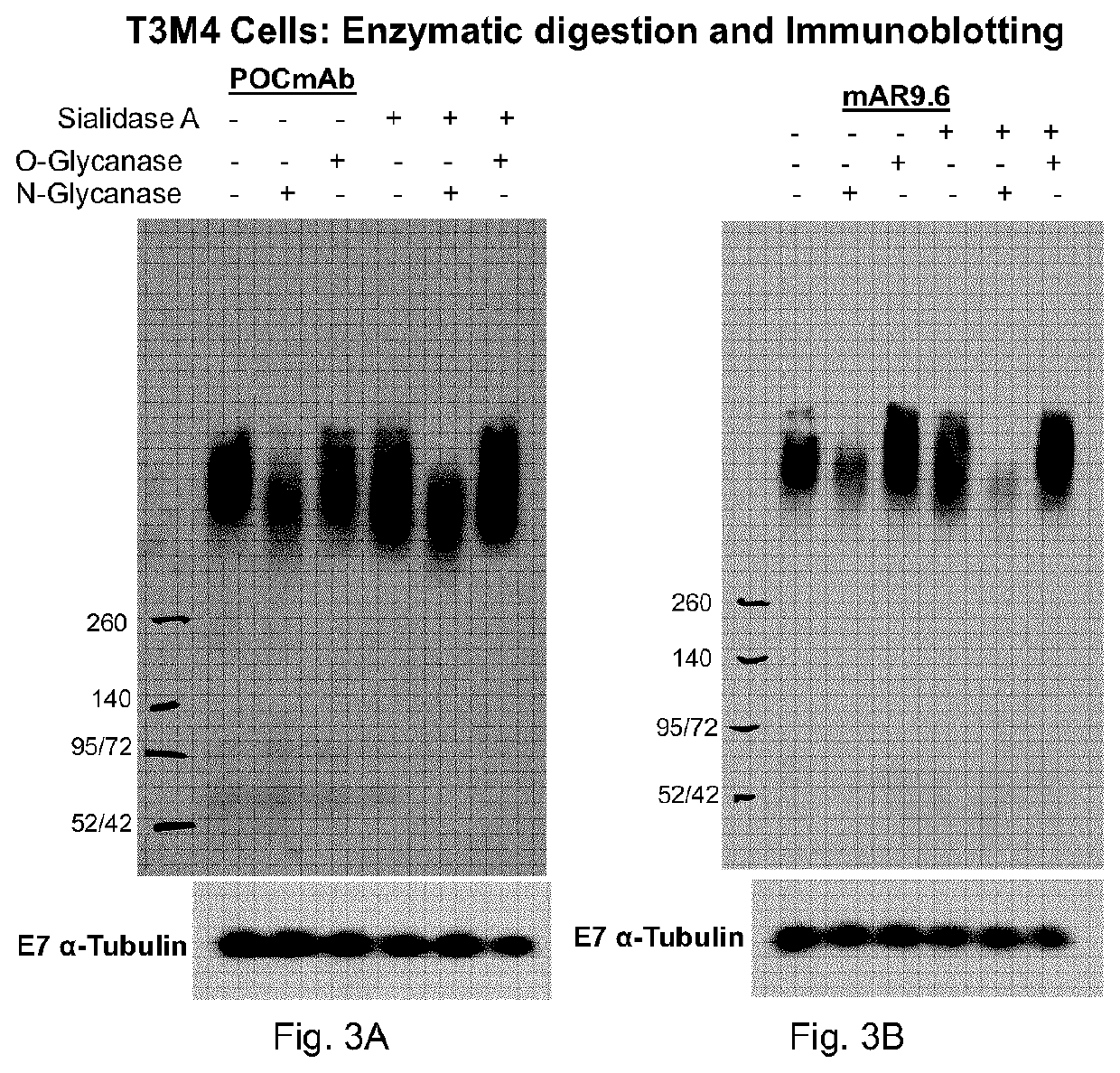Muc16 monoclonal antibody and uses thereof
a monoclonal antibody and muc16 technology, applied in the field of muc16 monoclonal antibody, can solve the problems of poor patient response to chemotherapy, poor prognosis, poor response rate, etc., and achieve excellent tumor imaging reagents, extended serum half-life of sdab, and easy engineering and production
- Summary
- Abstract
- Description
- Claims
- Application Information
AI Technical Summary
Benefits of technology
Problems solved by technology
Method used
Image
Examples
example 1
Expression of MUC16 Fragment
[0177]An expression vector encoding a fragment of MUC16 (the TR 1.2 construct) which comprises MUC16 tandem repeat (TR) SEA domain 5 and 6 (SEQ ID NO:17). This fragment contains SEA domain of TR 5, along with the PST rich sequences of TR 4 on one side and TR6 on the other side. The TR1.2 MUC16 fragment was expressed in CHO cells and purified according to standard techniques.
example 2
Anti-MUC16 Monoclonal Antibody Generation
[0178]Animal immunization. Four six-week old female A / J mice (The Jackson Laboratory, Bar Harbor, Me.) were bled (pre-immune serum) and injected intraperitoneally and subcutaneously with 100 μg of the TR1.2 MUC16 antigen emulsified in Titermax adjuvant at day 0 and at day 21. Blood was collected in microvette CB 300Z at day 31 or 38, and serum was stored at −20° C. until further use.
[0179]ELISA (serum titer determination). Pre- and post-immune sera titers of animals were assessed by ELISA. Unless otherwise stated, all incubations were performed at room temperature. Briefly, half-area 96-well were coated with 25 μl per well of immunogen at 20 μg / ml in PBS and incubated overnight at 4° C. Microplates were washed three times in PBS and blocked for 30 min with PBS containing 1% bovine serum albumin (BSA). Blocking buffer was removed and 25 μl of serial dilutions of sera samples were added. After a 2-h incubation, microplates were washed 4 times w...
example 3
Making of Recombinant Anti-MUC16
[0183]The VH and VL regions of the candidate antibody against MUC16 TR1.2A were sequenced, synthesized and cloned into the pTT5 vector in-frame with a constant domain of a human IgG1 heavy chain (comprising CH1, CH2 and CH3 regions) or in-frame with a constant domain of a human kappa light chain -, and recombinant mAbs were produced in CHO-3E7 cells by transient transfection according to Delafosse et al. J Biotechnol, 227 (2016). This antibody was named POCmAb.
TABLE 1Amino acid sequence of VH and VL regions of antibody POCmAbRegionSequenceSEQ ID NOVHEVQLVESGGGLVQPGGSRKLSCAASGFTFSTFGMHWVRQAPEKGSEQ ID NO: 15LEWVAYISSGSSTIYYGDTLOGRFIISRDNPKNTLFLQMTSLRSEDTAMYYCARSGYDYDPIYYALDYWGQGTSVTVSSVLDIVLTQSPASLAVSLGQRATISCRASESVDNYGISFMNWFQQKPSEQ ID NO: 16GHPPKLLIYGASNQGSGVPARFSGSGSGTDFSLNIHPMEEDDAAMYFCQQTKEVPWTFGGGTKVEIKR
TABLE 2Chothia numbering of the VH sequence=scheme number. sequence position. amino acidH11EH22VH33QH44LH55VH66EH77SH88GH99GH1010GH1111LH1212VH131...
PUM
| Property | Measurement | Unit |
|---|---|---|
| pH | aaaaa | aaaaa |
| concentration | aaaaa | aaaaa |
| concentration | aaaaa | aaaaa |
Abstract
Description
Claims
Application Information
 Login to View More
Login to View More - R&D
- Intellectual Property
- Life Sciences
- Materials
- Tech Scout
- Unparalleled Data Quality
- Higher Quality Content
- 60% Fewer Hallucinations
Browse by: Latest US Patents, China's latest patents, Technical Efficacy Thesaurus, Application Domain, Technology Topic, Popular Technical Reports.
© 2025 PatSnap. All rights reserved.Legal|Privacy policy|Modern Slavery Act Transparency Statement|Sitemap|About US| Contact US: help@patsnap.com



